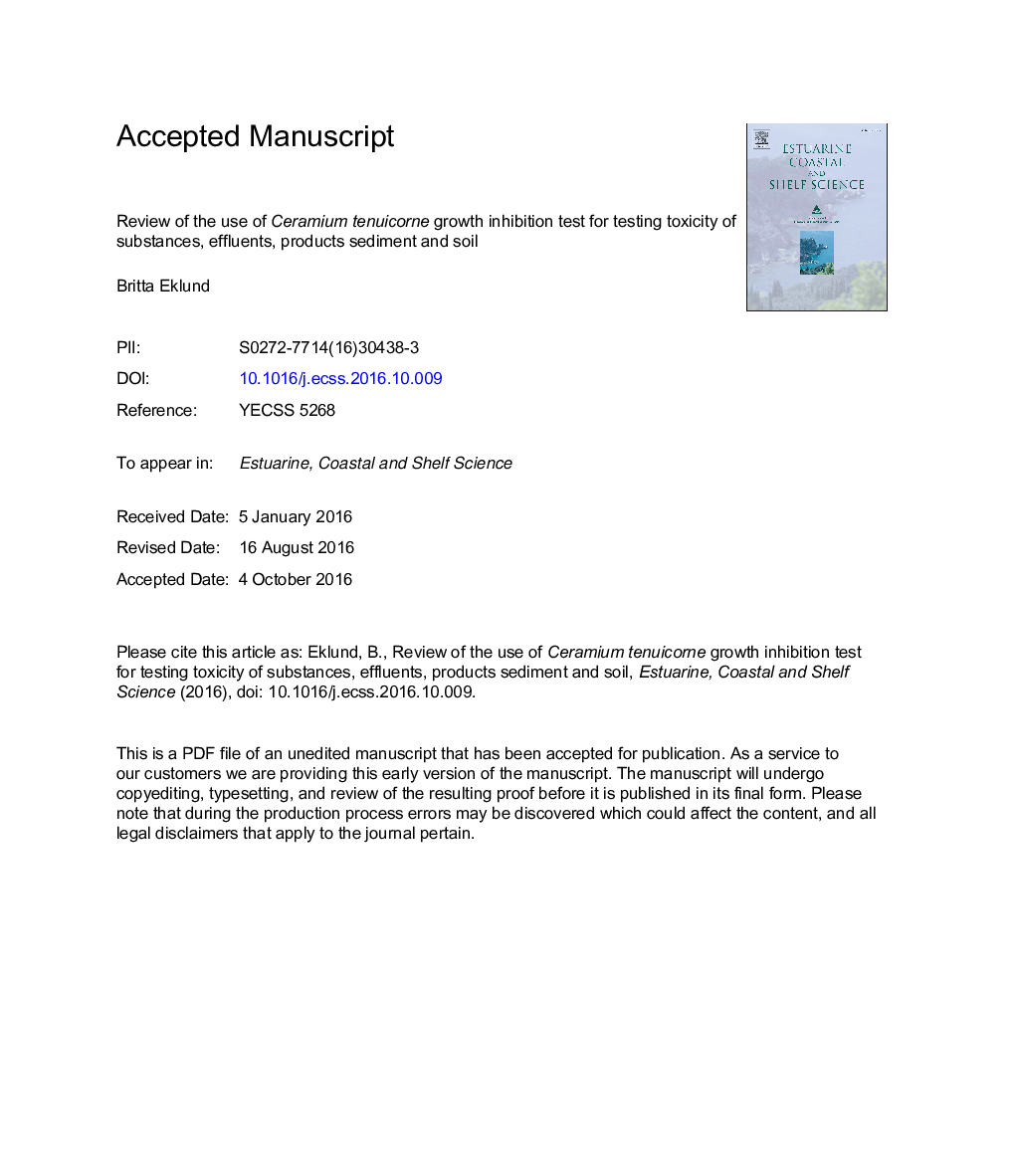| Article ID | Journal | Published Year | Pages | File Type |
|---|---|---|---|---|
| 5765035 | Estuarine, Coastal and Shelf Science | 2017 | 19 Pages |
Abstract
A growth inhibition test has been developed based on two clones of the red macroalga Ceramium tenuicorne, one originating from 7 PSU and the other from 20 PSU. The species can be adapted to different salinities and the test can be carried out between 4 and 32 PSU. This test became an ISO standard in 2010 (ISO 107 10) for testing of chemicals and water effluents. In this study new and published data has been compiled on toxicity of single substances, waste waters from pulp mills, leachates from antifouling paints, harbour sediments and soil used for maintenance of leisure boats. The results show that the alga is sensitive to both metals and organic compounds and to biocides used in antifouling paints. By testing leachates from antifouling paints these could be ranked according to their toxicity. Similarly, the toxicity of waste waters from pulp mills was determined and the efficiency of secondary treatment evaluated. Further, the test method proved useful to test the toxicity in sediment samples. Sediments from small town harbours and ship lanes were shown to be harmful and compounds originating from antifouling paints were responsible for a large part of the inhibiting effect. The alga proved to be sensitive to contaminants leaking from boat yard soil. The growth inhibition test is a robust test that has high repeatability and reproducibility and easily can be applied on water, soil and sediment samples without being too costly. The species is found worl-wide in temperate waters, which makes the results relevant for large areas. In the Baltic Sea C. tenuicorne is the most common red alga species and is thus particularly relevant for this area. The overall results show that contaminants from boat activities and the use of antifouling paints in particular pose a threat to the environment.
Related Topics
Physical Sciences and Engineering
Earth and Planetary Sciences
Geology
Authors
Britta Eklund,
